My butterfly bush looks dead, which can be a concerning issue for any gardener or lover of plants. The butterfly bush, also known as Buddleia, is a popular shrub that attracts a variety of butterflies and other pollinators with its vibrant blooms.
It’s a great addition to any garden as it not only adds beauty but also helps to support the local ecosystem. However, seeing a seemingly lifeless bush can be disheartening. It’s important to determine the cause of the issue to address it and revive the bush effectively. With proper care and attention, bringing a seemingly dead butterfly bush back to life and enjoying its beauty and benefits once again is feasible.
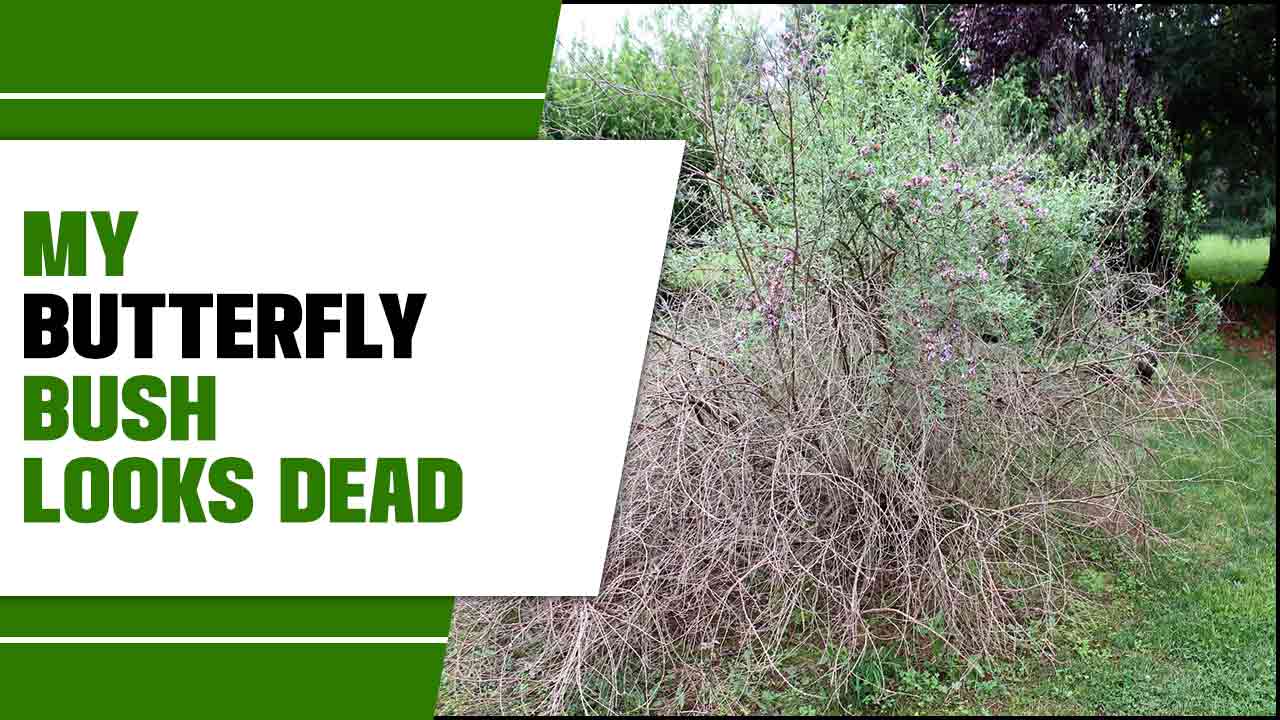
Signs Of A Dead Butterfly Bush
A dead butterfly bush may show signs of yellowing leaves, twig or stem dieback, or lack of new growth in spring. Root rot, pests, winter damage, or transplant shock could cause these symptoms. To determine if the bush is still alive, scrape a stem’s bark with your fingernail and look for green tissue underneath. If there is no green tissue, the stem is dead and should be pruned off.
Why My Butterfly Bush Looks Dead?
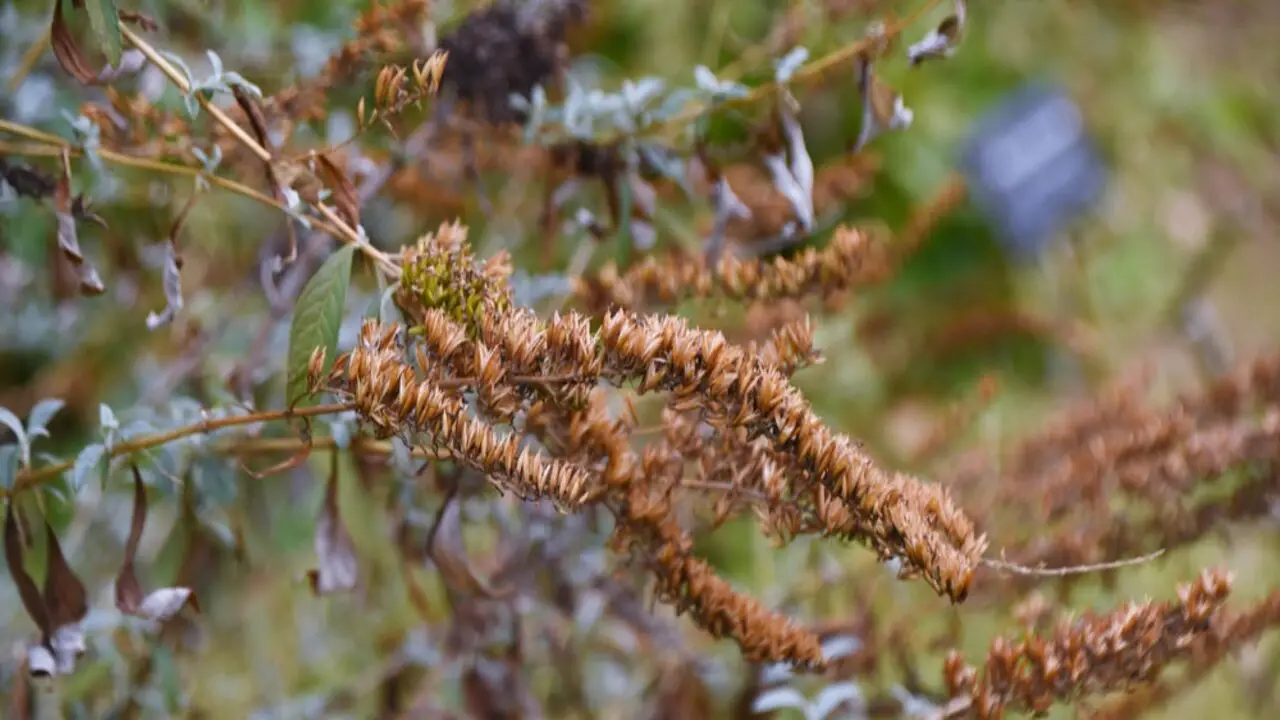
Sometimes, a butterfly bush may look dead in late winter or early spring, but it is still alive and dormant. Butterfly bushes are deciduous shrubs that lose their leaves in fall and remain bare until new growth emerges in spring.
In colder climates, they may die back to the ground and regrow from the root crown each year. Be patient and wait for the signs of life to appear. Here are some reasons on why my butterfly bush looks dead.
Soil Issues
Butterfly bushes need well-drained soil to thrive and avoid root rot. They can grow in clay soil but require some special accommodations. To improve its drainage and texture, you can amend the clay soil with organic matter, such as compost or peat moss.
You can also plant the butterfly bush in a raised bed or mound to elevate the root zone above the water table. Avoid planting the butterfly bush too deep or too close to other plants that may compete for water and nutrients.
Overwatering
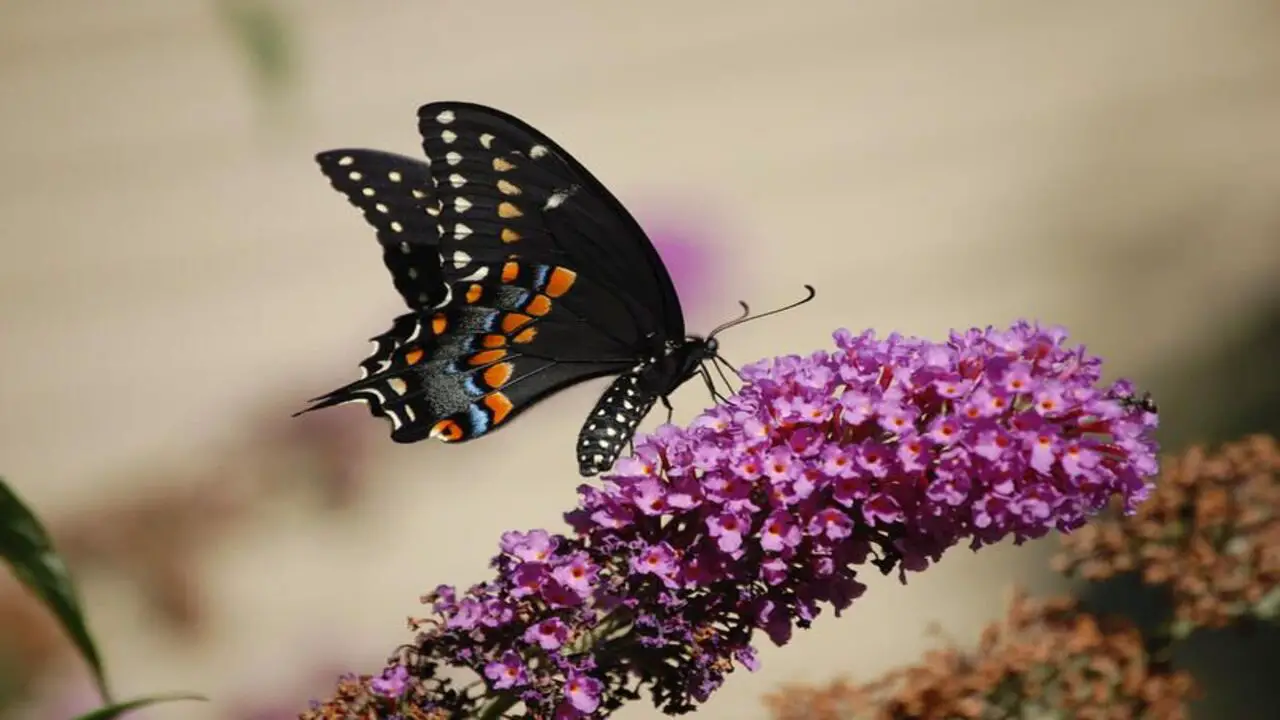
Overwatering can cause root rot and kill a butterfly bush. Butterfly bushes are drought-tolerant plants that do not need frequent watering once established. They only need about an inch of water a week during the growing season if rain is not sufficient4.
You can check the soil moisture by inserting your finger into the soil up to the second knuckle. If the soil feels moist or wet, do not water. If the soil feels dry, water slowly and deeply until the water reaches the root zone.
Pests
Butterfly bushes are generally resistant to insect pests but may occasionally attract caterpillars that feed on their leaves. These caterpillars are usually harmless and do not cause significant damage to the plant. They may also provide food for birds and butterflies that visit your garden.
However, if you find them unsightly or bothersome, you can handpick them off the plant or spray them with insecticidal soap or a biological pesticide such as Bacillus thuringiensis.
Winter Damage
Butterfly bushes are hardy in USDA zones 5 to 9 but may suffer from winter damage in colder regions. The cold temperatures can cause frost damage to the stems and leaves or freeze the roots if they are not well-protected by mulch.
To prevent winter damage, you can cover the base of the plant with a thick layer of mulch, such as straw or shredded leaves, in late fall. This will help insulate the roots and keep them from freezing. You can also wrap the stems with burlap or fleece to protect them from wind and snow.
Sun Exposure
Butterfly bushes need full sun to bloom and attract butterflies and beneficial insects. If your butterfly bush is planted in a shady or partly shaded area, it may not produce as many flowers or have a weaker growth habit.
You can transplant it to a sunnier location in early spring or fall when the weather is cool and moist to improve its performance. Alternatively, you can prune back any nearby trees or shrubs blocking its sunlight.
Transplant Shock
Transplant shock is a common problem that affects newly planted or moved plants. It occurs when the plant experiences stress from root disturbance, soil change, temperature change, or water loss during transplantation.
Transplant shock can cause wilting, leaf drop, stunted growth, or death of the plant. Choose a suitable location for your butterfly bush to prevent transplant shock that matches its sun, soil, and space requirements. You can also water it well before and after transplanting it to keep the roots moist and reduce water stress.
Pest And Disease Control For A Butterfly Bush
Butterfly bushes are relatively pest- and disease-free but may occasionally suffer from root rot, caterpillars, or powdery mildew. Root rot is caused by overwatering or poor drainage and can be prevented by planting the butterfly bush in well-drained soil and watering it only when needed.
Caterpillars are usually harmless and can be controlled by handpicking or spraying with insecticidal soap or a biological pesticide. Powdery mildew is a fungal disease that causes white, powdery spots on the leaves, and can be prevented by providing good air circulation and avoiding overhead watering. If powdery mildew occurs, treat it with a fungicide or a homemade baking soda and water solution.
How To Transplant A Butterfly Bush
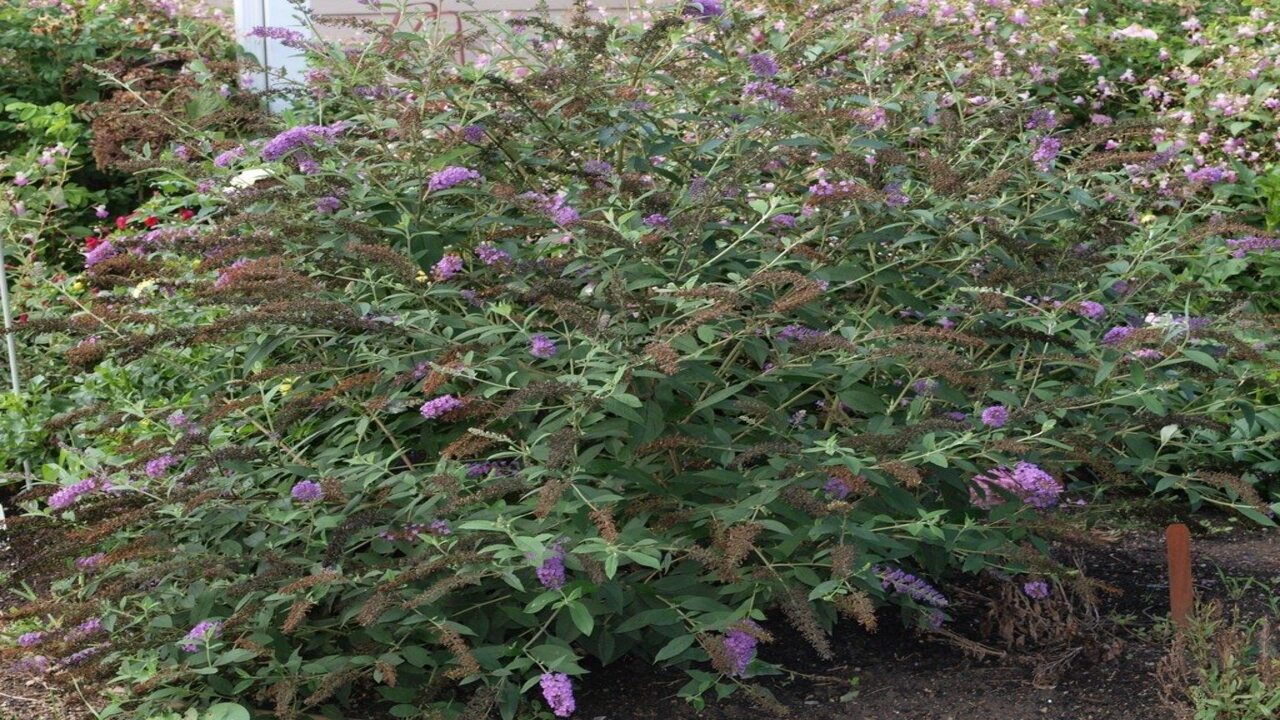
If you need to transplant a butterfly bush to a different location, you can do so in early spring or fall when the weather is cool and moist. Here are the steps to follow:
- Choose a sunny spot with well-drained soil and enough space for the mature size of the butterfly bush.
- Dig a hole twice as wide and as deep as the root ball of the butterfly bush.
- Amend the soil with compost or peat moss to improve drainage and texture.
- Water the butterfly bush well before digging it up to moisten the roots.
- Carefully dig around the base of the butterfly bush, trying not to damage the roots.
- Lift the plant from the ground and place it in a bucket or wheelbarrow.
- Move the plant to the new location and place it in the hole, ensuring it is at the same depth.
- Fill the hole with soil and gently firm it around the roots.
Maintaining A Healthy Butterfly Bush
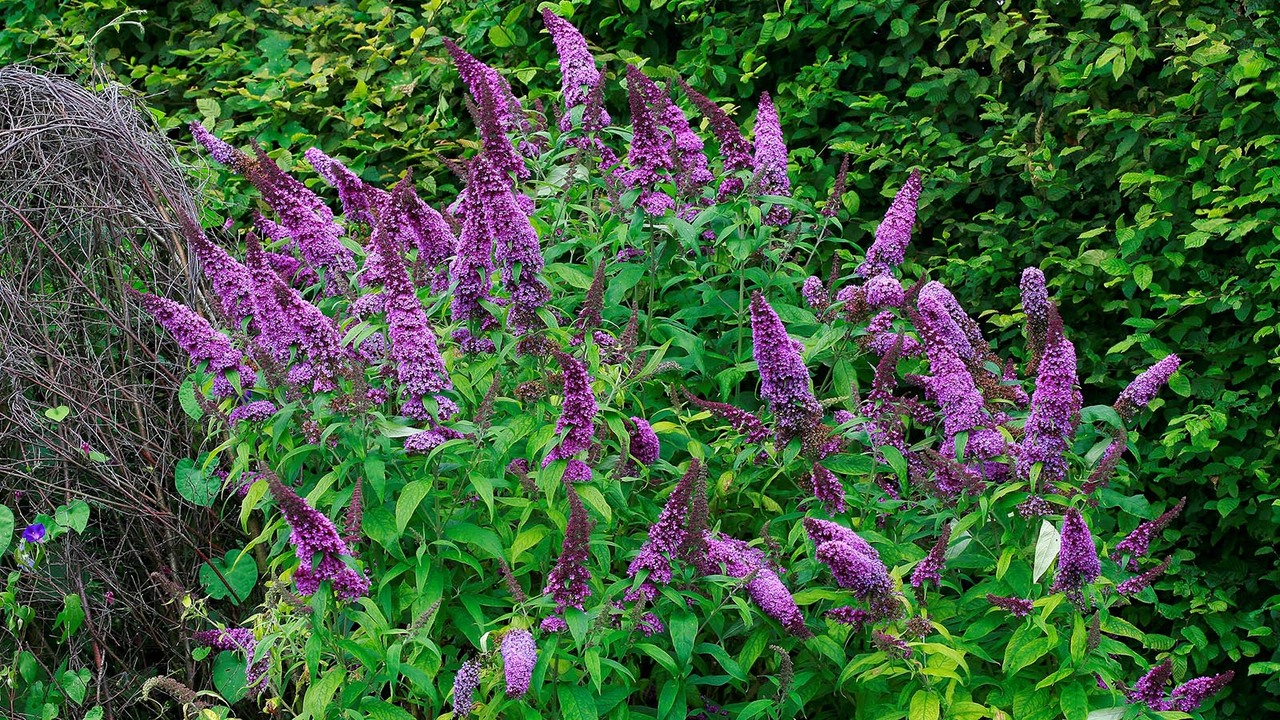
To maintain a healthy butterfly bush, Prune your butterfly bush in late winter or early spring, cutting back the old stems to about 12 inches (30 cm) from the ground. This will stimulate new growth and more flowers. Deadhead your butterfly bush regularly, removing the spent flower clusters before they form seeds.
Fertilize your butterfly bush only if grown in poor soil, with a 2-inch (5 cm) layer of compost over the root zone or some general-purpose fertilizer in spring. Monitor your butterfly bush for any signs of pests or diseases, and treat them promptly if they occur.
Conclusion
The appearance of a dead butterfly bush may cause concern for any gardener or nature enthusiast. It is important to note that such a sight may not always indicate failure or lack of success in gardening. Rather, it is crucial to be specific in identifying the cause of such an occurrence through careful observation and analysis.
Through this process, one can succeed in nurturing and maintaining a healthy butterfly bush. By paying close attention to the specific needs of this plant, such as proper watering, pruning, and pest control, one can achieve a thriving and vibrant addition to their garden.
Therefore, while the sight of a seemingly my butterfly bush looks dead may be disheartening, the importance of specificity and attention to detail in identifying and addressing the issue is paramount to success in gardening.
FAQ’s
[rank_math_rich_snippet id=”s-9ae5b40a-b1d0-46a7-8747-35081a8d5b0b”]

I am passionate about home engineering. I specialize in designing, installing, and maintaining heating, ventilation, and air conditioning systems. My goal is to help people stay comfortable in their homes all year long.








